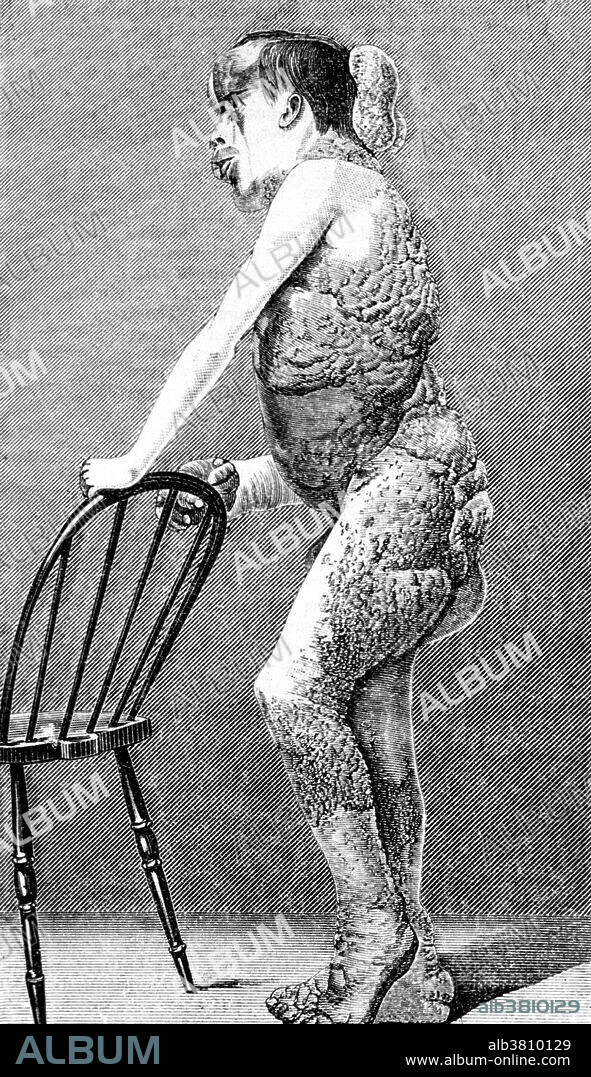alb3810129
Joseph Merrick, The Elephant Man

|
Añadir a otro lightbox |
|
Añadir a otro lightbox |



¿Ya tienes cuenta? Iniciar sesión
¿No tienes cuenta? Regístrate
Compra esta imagen.
Selecciona el uso:

Título:
Joseph Merrick, The Elephant Man
Descripción:
Traducción automática: Joseph Carey Merrick (1862-1890) fue un inglés con graves deformidades que fue exhibido como una curiosidad humana llamada el Hombre Elefante. Se hizo muy conocido en la sociedad londinense después de que fuese a vivir al Hospital de Londres. Aunque su enfermedad era incurable, a Merrick se le permitió permanecer en el hospital durante el resto de su vida. El cirujano inglés Frederick Treves lo visitaba a diario y ambos desarrollaron una estrecha amistad. En un principio se creyó que Merrick sufría de elefantiasis. Murió en 1890, a los 27 años. La causa oficial de la muerte fue asfixia, aunque Treves, que diseccionó el cuerpo, dijo que Merrick había muerto de una dislocación del cuello. La causa exacta de las deformidades de Merrick no está clara. La teoría dominante era que Merrick sufría de neurofibromatosis tipo I. En 1986, surgió una nueva teoría según la cual tenía el síndrome de Proteus. En 2001 se propuso que Merrick había sufrido una combinación de neurofibromatosis tipo I y síndrome de Proteus. Las pruebas de ADN realizadas en su cabello y huesos no resultaron concluyentes.
Joseph Carey Merrick (1862-1890) was an English man with severe deformities who was exhibited as a human curiosity named the Elephant Man. He became well known in London society after he went to live at the London Hospital. Although his condition was incurable, Merrick was allowed to stay at the hospital for the remainder of his life. English surgeon Frederick Treves visited him daily and the pair developed quite a close friendship. Merrick was originally thought to be suffering from elephantiasis. He died in 1890, aged 27. The official cause of death was asphyxia, although Treves, who dissected the body, said that Merrick had died of a dislocated neck. The exact cause of Merrick's deformities is unclear. The dominant theory was that Merrick suffered from neurofibromatosis type I. In 1986, a new theory emerged that he had Proteus syndrome. In 2001 it was proposed that Merrick had suffered from a combination of neurofibromatosis type I and Proteus syndrome. DNA tests conducted on his hair and bones have proven inconclusive.
Crédito:
Album / NLM/Science Source
Autorizaciones:
Tamaño imagen:
2400 x 4158 px | 28.6 MB
Tamaño impresión:
20.3 x 35.2 cm | 8.0 x 13.9 in (300 dpi)
Palabras clave:
1862 • 1886 • 1890 • ARTE • BLANCO Y NEGRO • CIENCIA • CONGENITA • DEFORMIDAD • DIBUJO • ELEFANTIASIS • EPOCA VICTORIANA • EUROPEA • EUROPEAS • EUROPEO • EUROPEOS • FAMOSA • FAMOSO • FAMOSOS • FIGURA • GENTE • GRABADO • HISTORIA • HISTORICO • HOMBRE • HOMBRES • ILUSTRACION • ILUSTRACIONES • IMPORTANTE • INGLES • MASCULINO • MEDICINAL • OBRA DE ARTE • PERSONA • PERSONALIDAD • PERSONALIDADES • PORTRAIT • RETRATO DE HOMBRE • RETRATO • SIGLO XIX • VICTORIANO


 Pinterest
Pinterest Twitter
Twitter Facebook
Facebook Copiar enlace
Copiar enlace Email
Email
